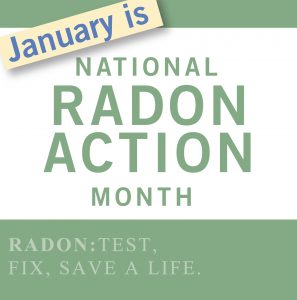 Radon is the second leading cause of lung cancer in the United States, and El Paso County has been designated as an area with high radon potential, according to the Environmental Protection Agency (EPA).
Radon is the second leading cause of lung cancer in the United States, and El Paso County has been designated as an area with high radon potential, according to the Environmental Protection Agency (EPA).
Radon is an invisible, odorless, tasteless, radioactive gas that results from the natural breakdown of uranium found in soils, rock, and water. Radon in Colorado is generated by the radioactive decay of radium, which is present in uranium bearing soils found throughout the Rocky Mountains and the eastern plains. All homes regardless of construction type or style can have elevated radon levels.
Radon is the second leading cause of lung cancer in the nation, according to the U.S. Surgeon General. Because radon is invisible and odorless, the only way to know if your home has a high level of radon is to test. Testing for radon is simple and it’s the only way to know if your family is at risk. Discounted test kits can be requested through the Colorado Department of Public Health and Environment (CDPHE) at www.coloradoradon.info. Test kits are also available at home improvement stores and generally inexpensive to purchase.
“It is important to test your home for radon to know if there are elevated levels. We want people to know how simple it can be to test, and the winter months are ideal for getting accurate results,” said Marla Luckey, M.P.H., Environmental Health Program Manager.
There are several proven methods to reduce radon in your home. For more information, the EPA recommends the following resources: National Radon Proficiency Program at www.nrpp.info and National Radon Safety Board (NRSB) at www.nrsb.org.
For more information about radon testing, call (719) 578-3199 and select option 3, or visit www.elpasocountyhealth.org.